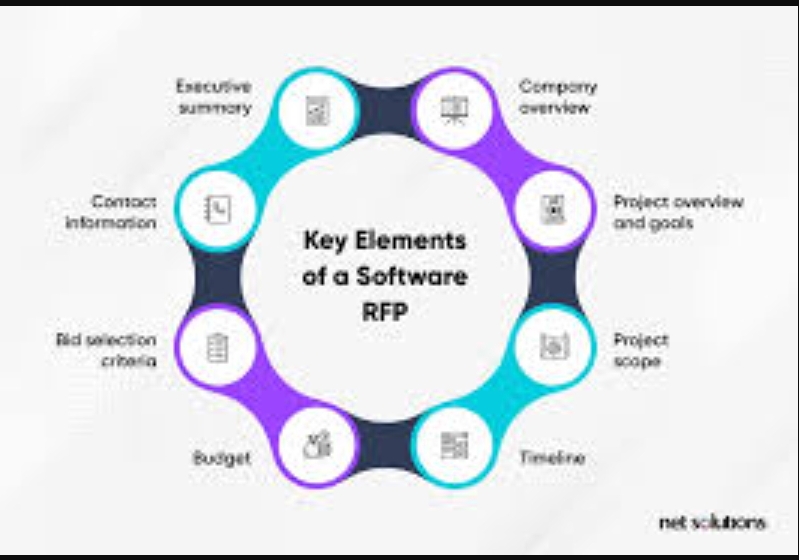Securing new customers, partners, and prospects in the competitive corporate environment of today depends much on the Request for Proposal (RFP) procedure. Choosing the appropriate RFP tool becomes critical as companies try to simplify their RFP processes. Your team’s performance, win rates, and general corporate development may all be much affected by this choice. Review these important elements when assessing rfp platform solutions to guarantee you make an educated decision:
Easy Adoption and User-Friendly Interface
The acceptance of any program determines its success. Give solutions with clear, user-friendly interfaces a priority when choosing an RFP system. From managing content libraries to generating proposals, a well-designed platform should let team members move easily across several capabilities. Search for programs with a clear learning curve to cut the training and onboarding times needed. Think of systems that let users through many procedures using interactive tutorials, tooltips, and contextual assistance. Your staff will embrace the program more likely the simpler it is to use, which will increase output and return on investment.
Flexibility and Customization
Every company has own RFP procedures and needs. The perfect RFP tool should therefore provide strong customizing choices to fit your particular requirements. Search for systems that let you customize templates reflecting your brand identity, unique fields, and workflow tailored tools. Configuring user roles and permissions is also rather important as it guarantees that team members have access to the appropriate tools and knowledge depending on their duties. Furthermore take into account tools that may accommodate all kinds of bids, from basic questionnaires to sophisticated, multi-section RFPs. This adaptability will help your staff to effectively manage a great variety of possibilities.
Cooperation and Features of Communication
Effective RFP answers usually call for cooperation across many departments among several team members. Select an RFP system that lets team members easily interact and communicate. Look for tools that let team members collaborate effectively including real-time editing, comment threads, and task assignments. Track changes and preserve a clear audit trail only using version control tools. Further improving team collaboration are certain sophisticated systems that allow connection with well-known communication tools like Slack or Microsoft Teams. Simplifying teamwork can help you to guarantee consistency and quality while ensuring that your RFP replies benefit from different skills.
Knowledge Basis and Content Management
Effective RFP procedures rely mostly on a strong content management system. Review sites with extensive knowledge bases or content libraries where you may save, arrange, and quickly access often used data like case studies, product descriptions, and corporate boilerplates. Search for sophisticated tools that let users rapidly identify relevant material depending on tags, keywords, or categories. Certain sites provide AI-powered content recommendations, which may greatly hasten the proposal building process. Think about systems that provide content analytics as well; they will assist you determine which replies or parts most appeal to winning bidders.
Capability of Automation and AI
Maintaining competitiveness in the hectic corporate scene of today depends on automation. Search for RFP tools with strong automation capabilities to simplify repetitious chores. This might call for planned reminders for significant deadlines, automated assignment of work to team members, or auto-population of standard fields. Some sophisticated systems use artificial intelligence to evaluate RFP needs and propose relevant material from your database. AI-powered tools may also assist to spot any conflicts or contradictions in your answers, therefore guaranteeing better recommendations. Your staff will be free to concentrate more on strategy and creating unique, customized replies by automating repetitive operations.
Cooperation with Current Systems
Your selected RFP platform should easily fit your current tech stack if you want to maximize efficiency and maintain data consistency. Think about how the program could interact with project management tools, document management systems, CRM system, and Search for pre-built connectors for well-known corporate apps or strong APIs that let you create unique integrations. Sync data across platforms to cut redundant data input, lower mistakes, and provide a more complete picture of your RFP processes. Integration with e-signature technologies also helps to simplify the latter phases of proposal submission, therefore saving time and guaranteeing compliance.
Reporting and Analytics Possibilities
Ongoing improvement of your RFP procedures and win rates depends on data-driven decision-making. Review RFP systems with complete reporting and analytics capabilities. Search for systems that provide real-time dashboards so you may immediately see important data such team performance, reaction times, and victory rates. Furthermore useful is the capacity to create bespoke reports catered to your particular KPIs. Predictive analytics on certain sophisticated systems let you see patterns and areas for development. Using these information can help you to improve your RFP plans, distribute resources more wisely, and finally raise your winning bid success rate.
Compliance and Security Measures
Given the delicate nature of many RFP answers, security should be first concern when choosing a platform. Search for programs with strong security measures include role-based access restrictions, multi-factor authentication, and end-to- end encryption. Think about sites that follow industry-specific rules and standards relevant to your company, including GDPR, HIPAA, or ISO 27001. Maintaining compliance and responsibility depends on audit trails and activity logs, hence some systems provide only these tools. Review the vendor’s disaster recovery and data backup procedures as well to make sure your important proposal data is safeguarded against any loss or breaches.
Performance and Scale
Your RFP program should be able to expand with the size of your company. Think about systems that can manage rising data, user, and proposal volumes without sacrificing speed. Better scalability than on-site solutions allows cloud-based solutions to let you readily modify resources depending on your requirements. Test the program under many scenarios, such managing several concurrent users or processing big, sophisticated RFPs. Seek for suppliers that clearly state their infrastructure, uptime assurances, and performance standards. Even as your proposal load rises, a scalable and high-performance RFP system can guarantee that your staff can work effectively.
Conclusion
Choosing the appropriate RFP tool or procurement system will make a big difference in how successful your company is in obtaining bids and simplifying proposal procedures. Carefully weighing elements including user-friendliness, customizing options, collaboration tools, content management capabilities, automation, integration possibilities, analytics, security, scalability, vendor support will help you to choose something that fits your particular needs.



